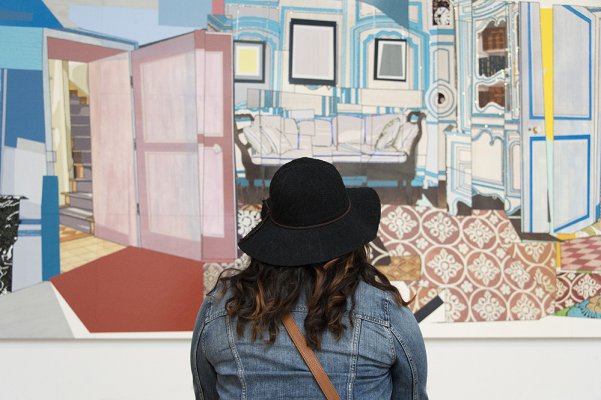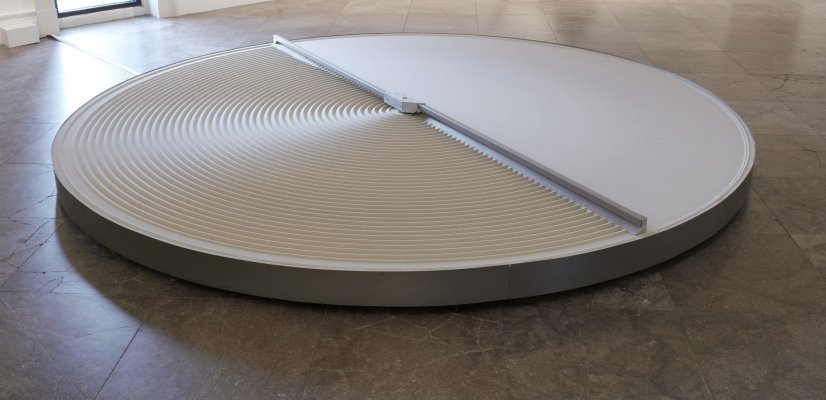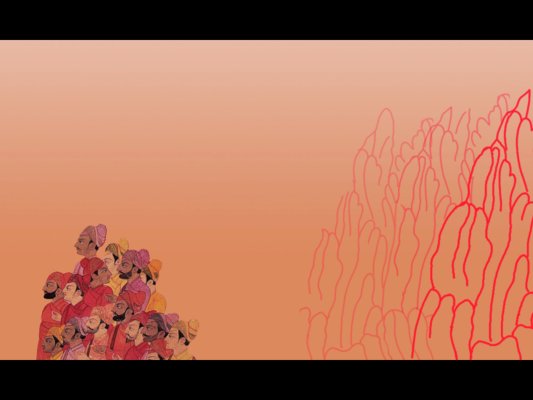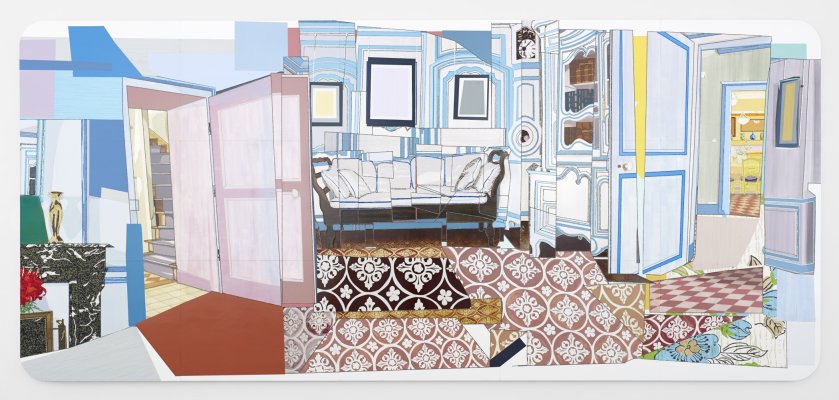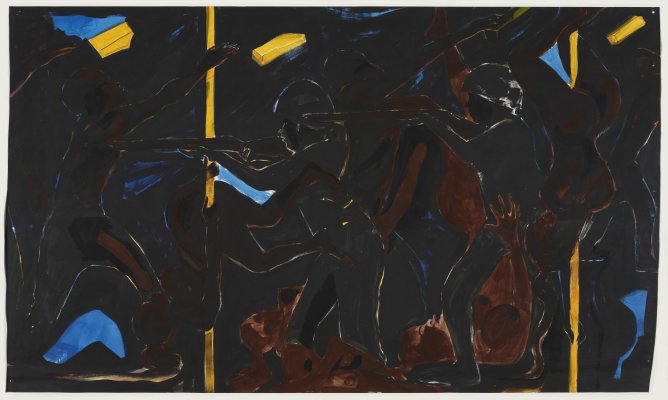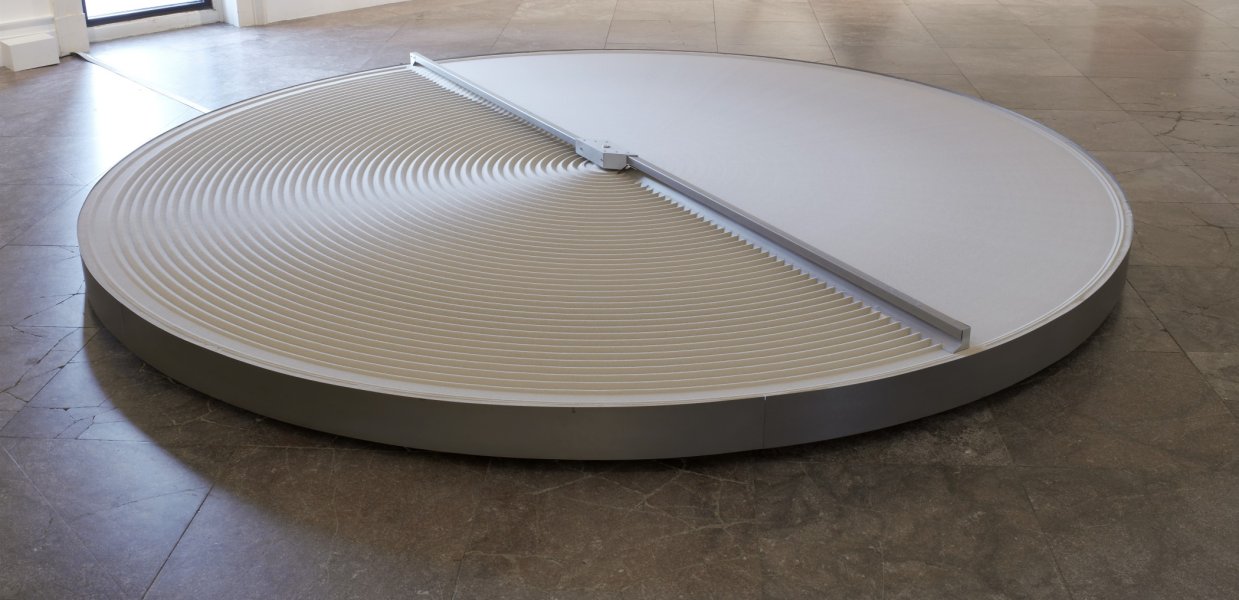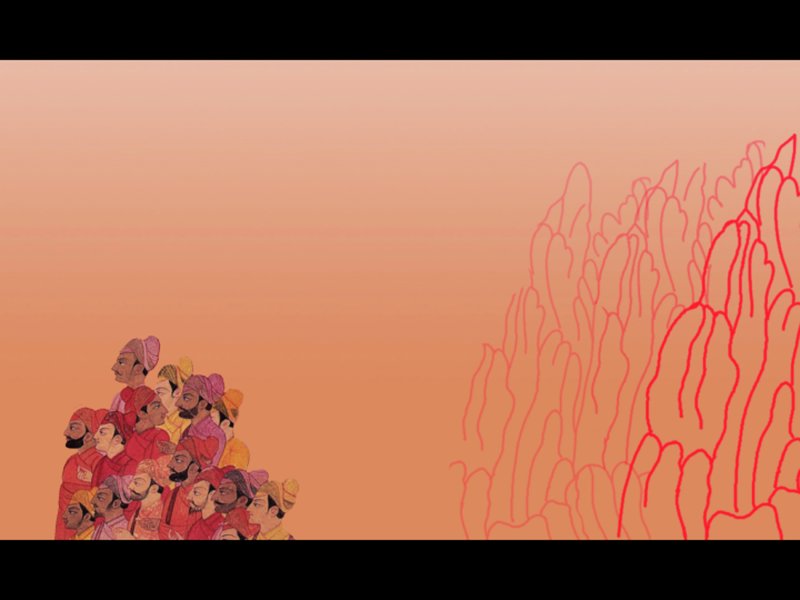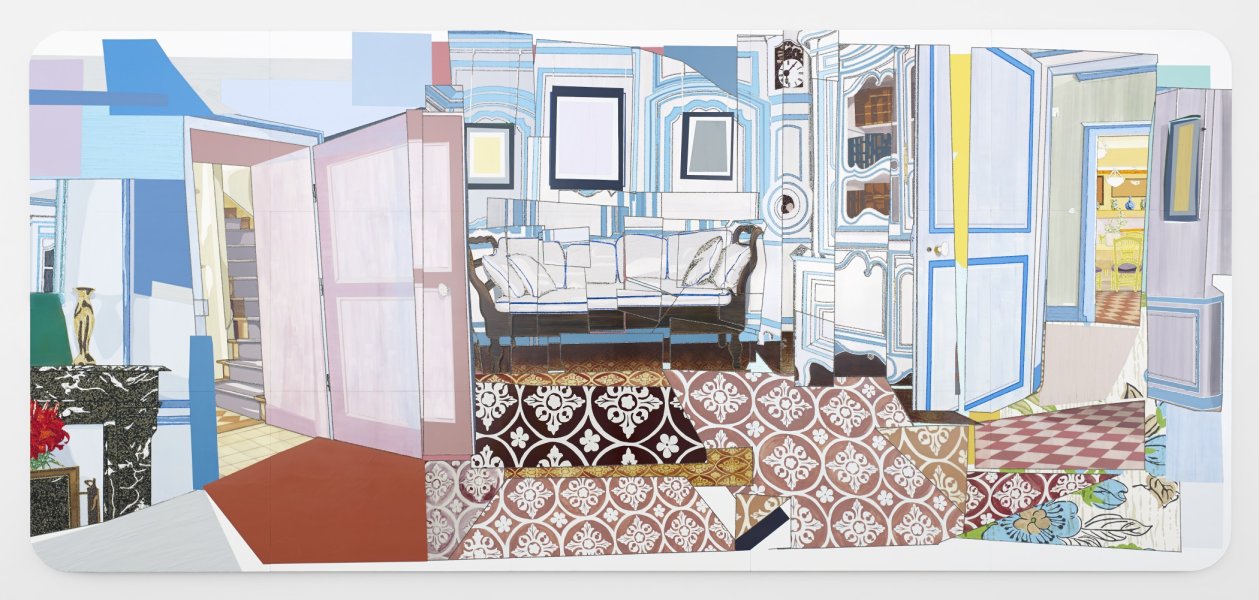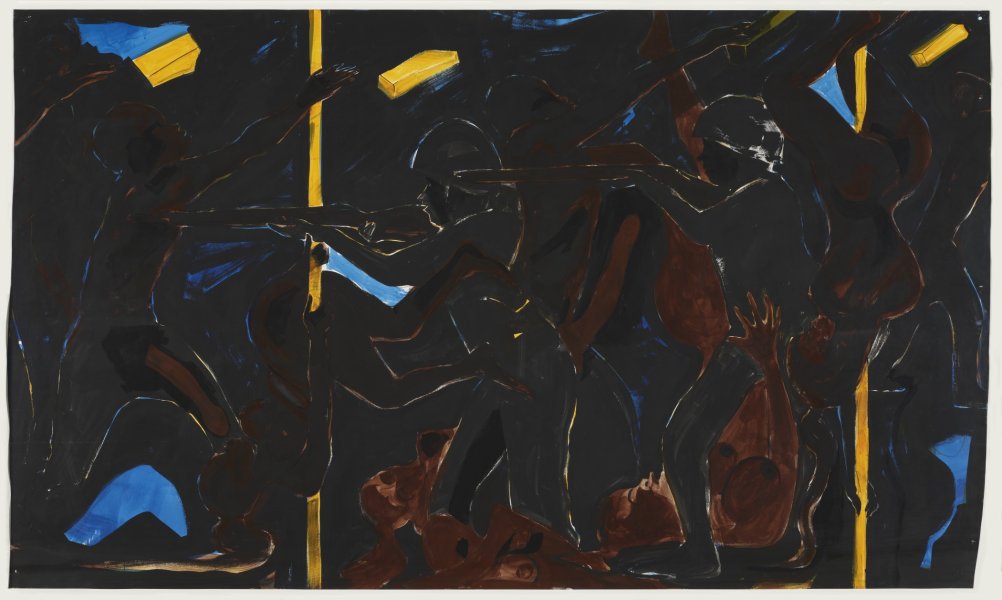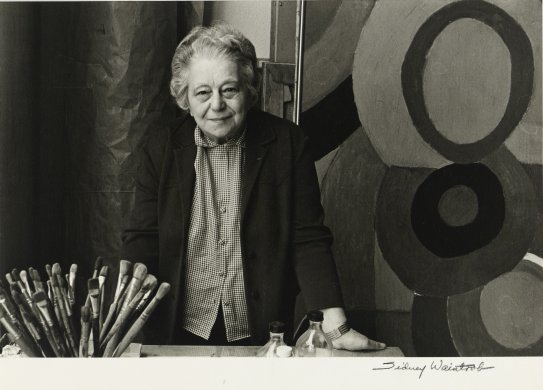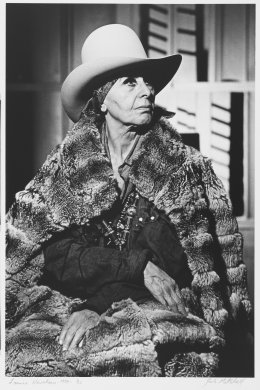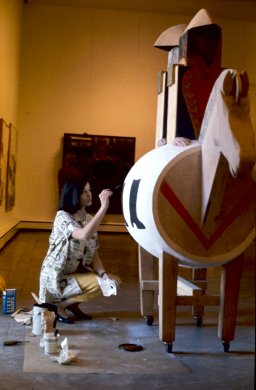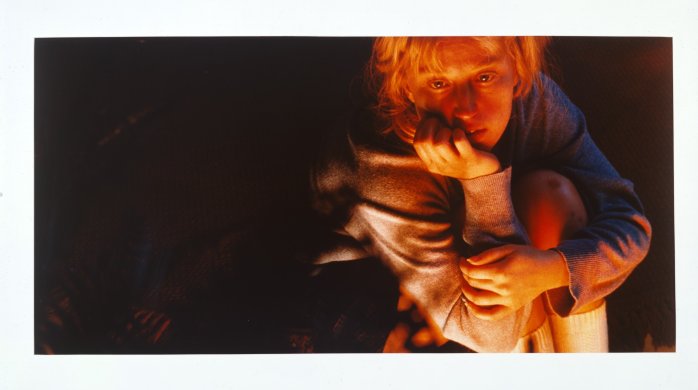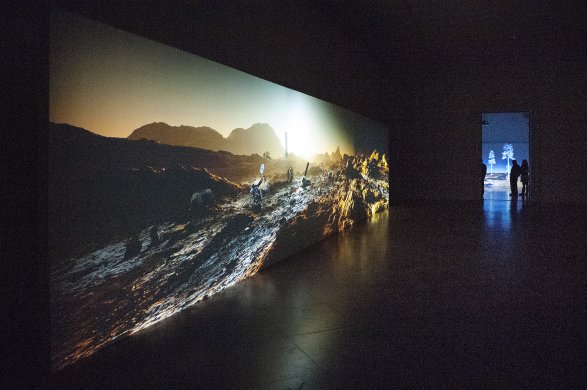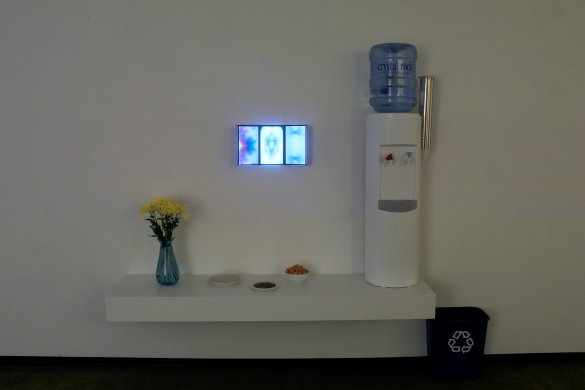On the occasion of Women’s History Month, and in conjunction with the National Museum of Women in the Arts’ second annual #5WomenArtists campaign, we're highlighting five women artists with works in our collection each Wednesday this month. For this final week, we focus on a diverse group of contemporary artists.
For the past 40 years, Mona Hatoum has been creating conceptual works that embody the shifting boundaries and alienation that are central to today's world map, contemporary existence, and her own dual exile from Palestine. A significant work in her career, the Albright-Knox’s + and -, 1994–2004, expresses the oxymoronic truth of existence and death, destruction and opportunity, and Hatoum’s personal sense of an unstable identity. It was recently on view in DECADE: Contemporary Collecting 2002-2012 (2012–2013).
Shirin Neshat came to the United States from Iran in 1974 to attend college, and, due to the Islamic Revolution, did not return home for 12 years. The changes she encountered on her homecoming led her to explore the role of women in Islam through photography and video. Fervor (Couple at Intersection), 2000, is a series of three photographs that are actually stills from a film called Fervor, which Neshat shot in Marrakesh, Morocco. It was recently on view as part of Photography by Women Artists (2010).
In her paintings, drawings, installations, videos, films, and animations, Shahzia Sikander constantly demonstrates the capacity of traditional artistic techniques and vocabularies to recast contemporary discussions of home and displacement, East and West, past and present, and what it means to be a woman, especially a Muslim woman, amid these fraught binaries. Sikander’s Pursuit Curve, 2004, was recently on view in Videosphere: A New Generation (2011) and Screen Play: Life in an Animated World (2015).
Mickalene Thomas is best known for her elaborate painterly practice involving rhinestones and a colorful palette that explores concepts of beauty and questions what it means to be a woman. Interior: Monet's Blue Foyer, 2012, marks a shift in Thomas’s subject matter; it is part of a series of works in which she moves away from the physical body and, she has said, “experiments with the construction of the intimacy of interior spaces.” It was recently on view in the Sculpture Court during For the Love of Things: Still Life (2016).
In her large-scale installations, films, and works on paper, Kara Walker employs provocation and humor to explore the raw intersection of race and gender as they relate to the black American experience. The Albright-Knox’s recent acquisition Four Idioms on Negro Art #1 Folk, 2015, is one of three works meant to evoke a form of representation that carries cultural associations with “low” art, and is often stereotyped as the work of black artists: primitivism, folk art, and graffiti. Each work is a take on one of these visual languages, while paying homage to and satirizing the motif.
